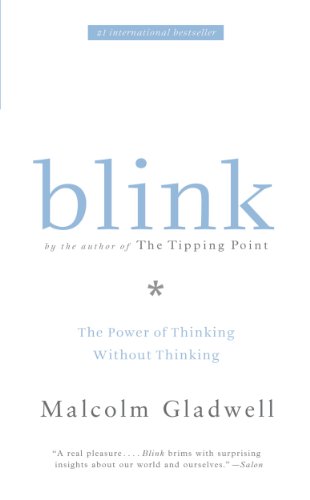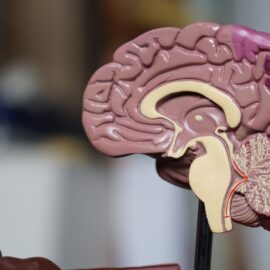

This article is an excerpt from the Shortform summary of "Blink" by Malcolm Gladwell. Shortform has the world's best summaries of books you should be reading.
Like this article? Sign up for a free trial here .
What is the secret to effective decision making? How can I make sure that every decision I make is a good one?
The key to effective decision making is spontaneity. We’re taught to believe that the best decisions are those that are well-thought-out and take the most time to make, but snap judgments may actually lead to more successful decisions. Here’s how to make good decisions.
The Key to Effective Decision Making: Structure Your Spontaneity
We can make better snap judgments (leading to effective decision making) by providing the unconscious mind with structure. This involves rehearsing our desired spontaneous responses and developing rules we can fall back on in times of stress. This is how we make good decisions.
There are two secrets to effective decision making:
1. Effective Decision Making Requires Both Deliberate and Unconscious Thinking
Neither deliberate nor intuitive decision making is inherently good or bad. Whether these strategies are good, bad, or neutral depends on the situation. If we have the time, resources, and a clearly defined task, deliberate decision making is productive. It can also prime us for “rapid cognition,” or snap judgments. This is Step 1 of how to make good decisions.
Part of how we can improve our effective decision-making process is to understand when the deliberate approach is best, and when the intuitive approach is best. When possible, start with deliberate decision making. This lays the groundwork for rapid cognition.
For example, improvisation comedy is all about spur-of-the-moment decisions. You have to be good at thinking on your feet or the comedy will fall flat.
But what the audience doesn’t see is all the preparation involved in creating a successful show. Even though the actors are making things up as they go along, they’re also following rules, such as the idea of agreement. Whatever happens to their characters onstage, the actors must “say yes” and go with it. Resisting a suggestion onstage limits the show’s comedic potential.
Following this rule keeps the momentum going. This structure is what makes the actors’ spontaneous decisions so effective (and funny). Planning is a key to effective decision making.
2. Effective Decision Making Requires Being Frugal with Information
Don’t overload yourself with too much detail. Information can be a burden. Find the most essential data points and make a decision from those. This is Step 2 of how to make good decisions.
As demonstrated in Gottman’s “love lab” (in which some researchers can predict divorce in 3 minutes), you don’t need a lot of information to identify patterns—just the right information. If we want to protect the integrity of our snap judgments, we need to limit the data we throw at it when making a decision. This leads to more effective decision making.
The example below demonstrates the practical uses of these lessons for effective decision making.
Example of Effective Decision Making: Cook County Hospital
Changes at Cook County Hospital show us how to make good decisions. In the late 1990s, Cook County Hospital in Chicago changed the way it diagnoses ER patients with chest pain.
The Problem: No Effective Decision Making
At the time, the hospital was overcrowded and under-resourced. The Emergency Department was especially impacted. It was the first stop for many Cook County residents with health complaints because they didn’t have insurance. Sometimes, doctors would have trouble walking the halls because the ED was so crowded.
Every day, an average of 30 people came to the ED thinking they were having a heart attack. The protocol for diagnosing a heart attack was both resource-intensive and inconclusive.
The Difficulty of Diagnosing a Heart Attack
The key test for determining if someone is having a heart attack is the ECG, but ECGs are unreliable. The only way to conclusively diagnosis a heart attack is with an enzyme test, but this takes hours, which patients in an emergency don’t have.
Without good diagnosing options, doctors had to weigh numerous factors to diagnose a heart attack, including blood pressure, fluid in the lungs, the ECG reading, duration of chest pain, location of pain, history of heart trouble, cholesterol level, drug use, diabetes diagnosis, age, and weight.
After assessing all this information, the doctor would then make an educated guess regarding whether or not the patient was having a heart attack. This is not effective decision making.
To be on the safe side, they admitted any patient who might be having a heart attack. But this led to the hospitalization of many people who didn’t need to be there. Across the country, only 10% of those admitted to the hospital for a suspected heart attack are actually having a heart attack.
Admitting all these people, 90% of whom weren’t actually having a heart attack, was costing Cook County Hospital a lot of money, and there weren’t enough beds for all the patients. Something had to change.
The Solution: Effective Decision Making
The hospital’s chairman did something radical. He decided to diagnose some chest-pain patients using an algorithm that wasn’t yet well-researched enough to be widely used. He compared the diagnosis success rate of the algorithm with the physicians’ informed guesses.
Rather than accounting for all the factors the doctors did, the algorithm factored in just four things:
- The ECG
- Blood pressure
- Fluid in the lungs
- Unstable angina
Doctors thought using this algorithm was dangerous for patients. Diagnosing a heart attack is complicated. Why would you want less information rather than more? Is this how to make good decisions?
But it turned out that the algorithm was 70% better than doctor diagnosis at indicating when a patient wasn’t suffering a heart attack.
The algorithm was also safer: Doctors correctly identified patients who ultimately had major complications 75-85% of the time; the algorithm led to correct predictions 95% of the time. The algorithm is now the established protocol at Cook County and has saved thousands of lives.
This example shows again that less information can lead to better decisions, as long as it’s the right information. This is an example of effective decision making.
This example also shows how establishing procedures creates necessary structure for spontaneous decision making. Like improv actors who know the rules (and have rehearsed them) before getting on stage and making snap decisions, Cook County ED doctors can follow a protocol that narrows their focus to the most important details, increasing their ability to thin-slice effectively in a stressful environment.
———End of Preview———

Like what you just read? Read the rest of the world's best summary of "Blink" at Shortform . Learn the book's critical concepts in 20 minutes or less .
Here's what you'll find in our full Blink summary :
- How you can tell if a marriage will fail, within 3 minutes
- Why your first impressions are usually surprisingly accurate
- The dark side to making first impressions, and how to avoid the,






